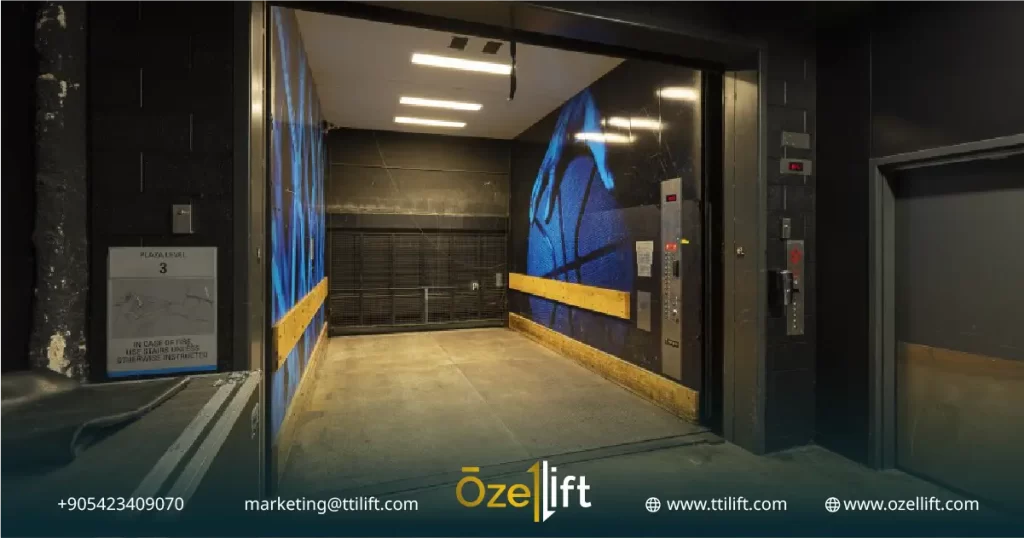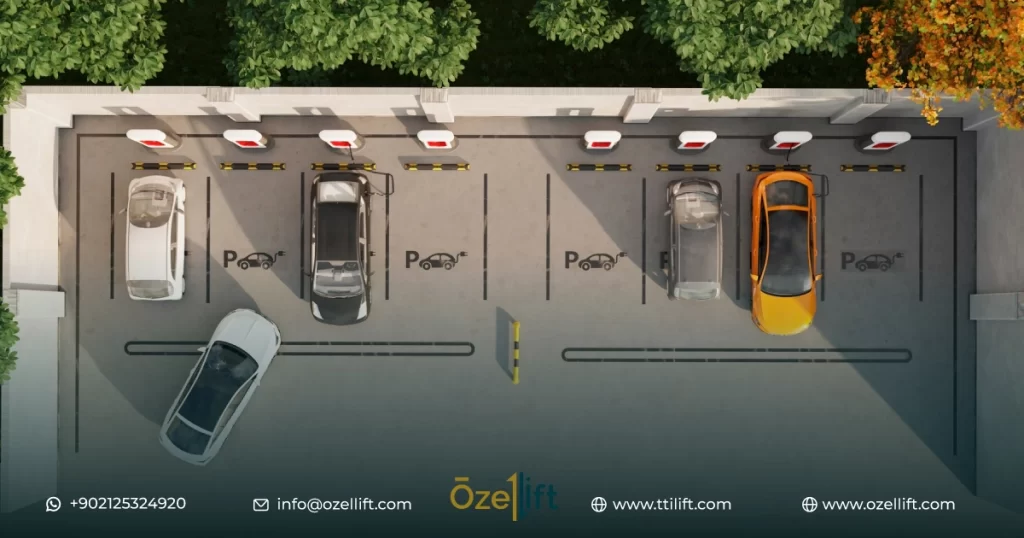Service Elevator Dimensions play a crucial role in their functionality. These dimensions determine the capacity and type of materials a service elevator can handle. Let’s delve deeper into the world of Service Elevator Dimensions and explore how they impact building operations.
Understanding Service Elevator Sizes
Service elevators, the unsung heroes of building functionality, require specific dimensions to ensure they efficiently perform their essential tasks. While there’s no single “one size fits all” answer, this section explores the key factors that influence service elevator size and provides a general idea of typical dimensions.
Key Factors of Service Elevator Dimensions
Key Factors to Consider:
- Building Purpose and Use: The type of building (residential, commercial, hospital) and its intended uses will significantly impact the size requirements. For example, a high-rise office building might require a larger service elevator to accommodate bulky furniture compared to a low-rise apartment building.
- Cargo Weight and Capacity: The weight and size of the heaviest equipment or materials the elevator needs to transport will dictate the minimum required floor space and weight capacity.
- Doorway and Opening Dimensions: Service elevators prioritize functionality, so doors and openings need to be large enough to accommodate bulky items like machinery or pallets.
Understanding these factors empowers you to make informed decisions when determining the optimal service elevator dimensions for your building.
While we’ll delve into optimizing service elevator design in the next section, let’s explore some typical service elevator dimensions to provide a general reference point.
Service Elevators types
There are two main types of service elevators: electric and hydraulic. Electric elevators are commonly used in buildings with easy access to power and maintenance, such as offices and apartments. Hydraulic elevators are better suited for industrial settings where power is limited or heavy loads need to be lifted, like warehouses and factories.
Dimension of Observation Elevators
Observation elevators must adhere to specific design standards. The enclosure and counterweight should be made of laminated glass, and the enclosure length should be 6 inches apart. The glass thickness must be sufficient to withstand the counterweight’s force. The entrance enclosure should match the counterweight’s height.
Observation elevators can offer single or 360-degree views. Single-view elevators are suitable for buildings with smooth surfaces, while 360-degree elevators have decorative features. Single-view elevators can be placed in corners to maximize space and views. Observation elevators can be installed at the top or bottom levels of a building.
Dimension of Pneumatic Elevators
Pneumatic elevators have limitations but offer advantages, such as being suitable for shorter buildings and wheelchair accessibility. They require less floor space compared to electric elevators. The cabin dimensions are typically 36 inches wide and 43 1/2 inches deep.
Pneumatic elevators come in various models, like the PVE37, which is a space-saving option ideal for homes. It can carry two adults and weighs up to 450 pounds. The interior cabin is 32 inches wide and can handle five stops and a travel distance of 50 feet.
A pneumatic elevator consists of a hoist cylinder, drive mechanism, and vacuum turbine. The turbine powers the elevator, which travels at a constant speed and distance. The elevator car is moved up and down by adjusting air pressure. The height it can travel depends on its capacity.
Examples of Service Elevator Uses
Service elevators play a crucial role in keeping buildings operational and running smoothly. Here are some everyday examples of how service elevators are utilized:
- Building Maintenance: Technicians use service elevators to transport tools, equipment, and building materials throughout the facility for repairs, maintenance tasks, and installations.
- Housekeeping Operations: From transporting cleaning supplies and equipment to removing waste, service elevators are essential for maintaining cleanliness and hygiene, especially in large buildings like hotels or hospitals.
- Deliveries: Service elevators provide a dedicated route for bulky deliveries that might not be suitable for passenger elevators due to size or potential disruption to building occupants. This ensures smooth and efficient delivery flow without impacting regular elevator traffic.
- Furniture Moving: In residential buildings, service elevators are essential for facilitating furniture moving during tenant turnover or renovations.
- Medical Facility Needs: Hospitals and healthcare facilities rely on service elevators to transport medical equipment, supplies, and laundry throughout the building, ensuring efficient patient care and staff operations.
These are just a few examples, and the specific uses will vary depending on the building type and its unique needs.
Know more about
Home Elevator Dimensions
geared and gearless traction elevator
Optimizing Service Elevator Dimensions for Your Needs
Now that you understand the factors influencing service elevator size, let’s explore how to optimize the design for your specific building needs. Here are some key elements to consider:
Doorways and Openings
- Service elevator doors and openings need to be wider and taller than passenger elevators to accommodate bulky items. Consider the largest equipment or materials that will be transported to determine the minimum required dimensions.
- Automatic doors are highly recommended for improved efficiency and ease of use, especially for staff carrying tools or supplies.
Floor Strength
- Service elevators frequently transport heavy loads. The floor needs to be constructed with robust materials like reinforced concrete to withstand significant weight without compromising safety or performance.
- Ozellift can advise you on the appropriate floor strength based on the anticipated weight capacity of your service elevator.
Ceiling Height
Ensure there’s sufficient headroom to accommodate tall equipment or furniture being transported. Standard ceiling heights in service elevators might be higher than those in passenger elevators.
By carefully considering these design elements, you can optimize your service elevator for functionality, safety, and long-term efficiency. Remember, even seemingly minor details like door width or ceiling height can significantly impact how effectively your service elevator serves its purpose.
Choosing the Right-Sized Passenger Elevator
When selecting a passenger elevator, consider factors like available space, expected passenger volume, and desired weight capacity. The elevator’s size should be proportionate to the building’s space. For smaller spaces, opt for smaller elevators, while larger spaces can accommodate bigger ones.
The number of regular users also influences elevator size. A few users might suffice with a smaller elevator, while high traffic requires larger ones. Lastly, ensure the elevator’s weight capacity accommodates all anticipated passengers.
Benefits of Choosing Ozellift for Your Service Elevator Needs
Now that you’ve explored service elevator dimensions and design considerations, it’s time to understand why Ozellift is your perfect partner for all your service elevator needs. Here’s what sets us apart:
- Customized Design Expertise: We don’t offer a “one size fits all” approach. Our experienced team works closely with you to understand your building’s specific requirements and design a service elevator that perfectly fits your space and operational needs.
- Optimum Functionality: We prioritize functionality in every aspect of service elevator design. From ensuring adequate door width and floor strength to optimizing car size and layout, we ensure your service elevator maximizes efficiency and workflow.
- Safety at the Forefront: Safety is paramount. We utilize high-quality materials, adhere to strict building codes, and implement the latest safety features to guarantee a safe and reliable service elevator for your building staff.
- Commitment to Quality and Durability: We partner with trusted manufacturers renowned for their quality and durability. Your Ozellift service elevator will provide years of smooth operation and minimal maintenance needs.
- Exceptional Customer Service: Our dedication to customer service extends beyond the sale. We provide comprehensive support throughout the entire process, from initial consultation and design to installation, maintenance, and future technical assistance.
Know more about
passenger elevator capacity
cost of a home elevator
Don’t Settle for Anything Less
Choosing the right service elevator is crucial for your building’s functionality and operational efficiency. Partnering with Ozellift ensures you receive a customized, high-quality service elevator designed to meet your specific needs and keep your building running smoothly for years to come.
Contact Ozellift Today for a Free Consultation!
Ready to discuss your service elevator needs? Our team is here to answer your questions and guide you through the process. Contact Ozellift today to schedule a free consultation and discover how we can create the perfect service elevator solution for your building. Let Ozellift be your trusted partner in keeping your building operational and efficient.
What size are service elevators?
Varies based on building use, cargo weight, and door size.
Are service elevator doors wider than passenger doors?
Yes, to accommodate bulky equipment and materials.
How strong should the service elevator floor be?
Strong enough to handle the heaviest expected loads.
Q:



